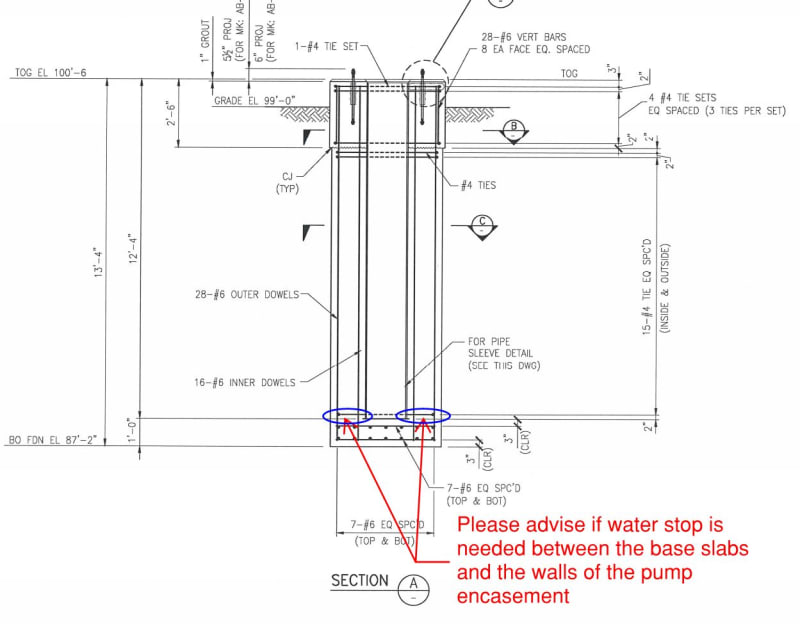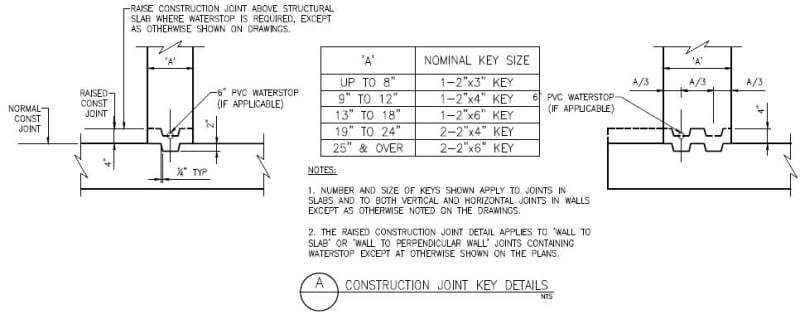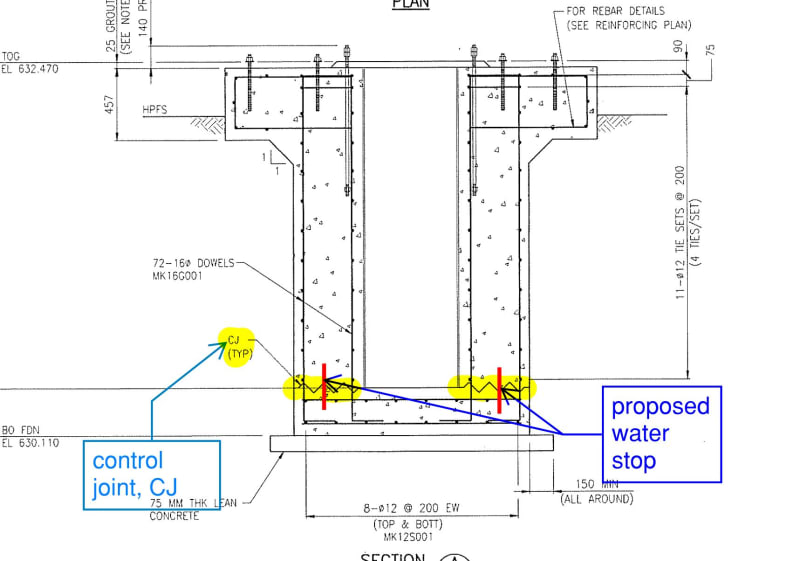oengineer
Structural
- Apr 25, 2011
- 732
Is it beneficial to use a water stop between the bottom slab & the wall of a Vertical Suspended Pump Can Foundation. The image below depicts what I am asking.

What are the advantages & disadvantages of providing a water stop at these locations in the foundation for the pump can?
My initial thought is that since the concrete bottom slab & wall are cast monolithically together it is not needed.
Comments/suggestion are appreciated.

What are the advantages & disadvantages of providing a water stop at these locations in the foundation for the pump can?
My initial thought is that since the concrete bottom slab & wall are cast monolithically together it is not needed.
Comments/suggestion are appreciated.


